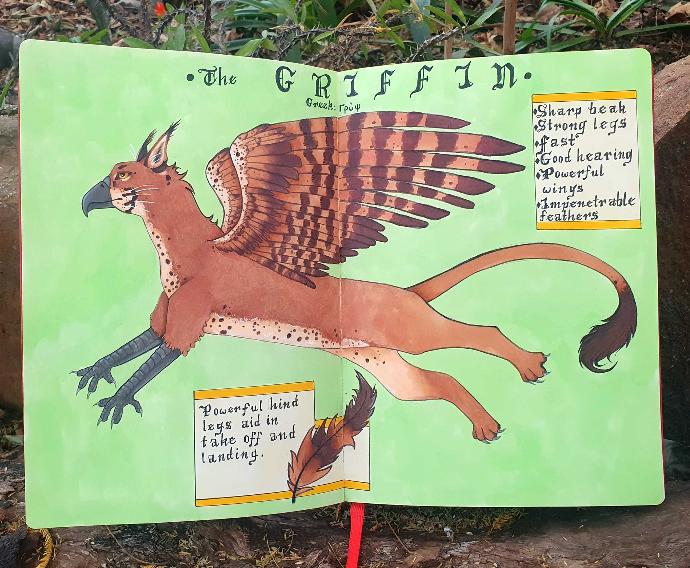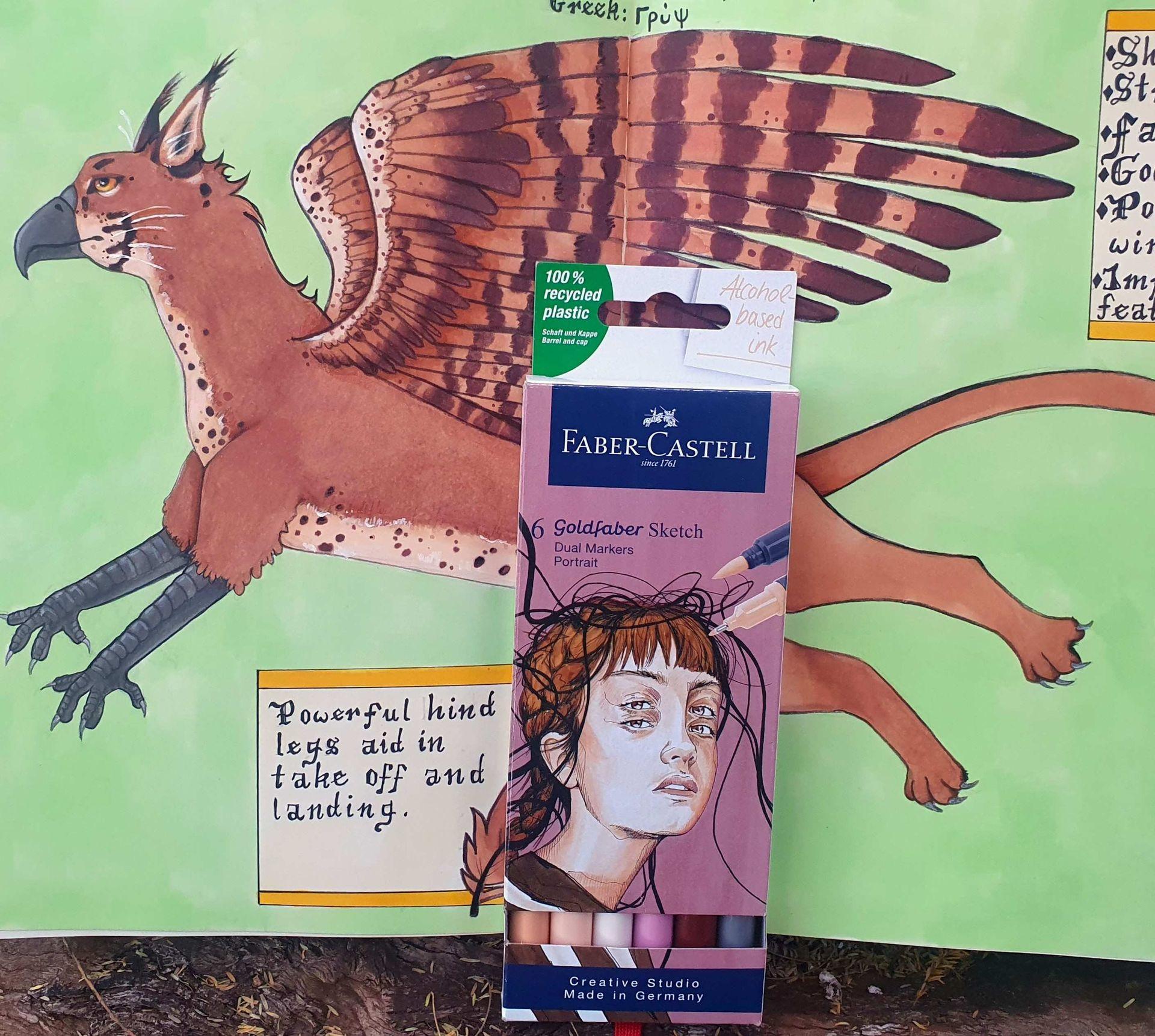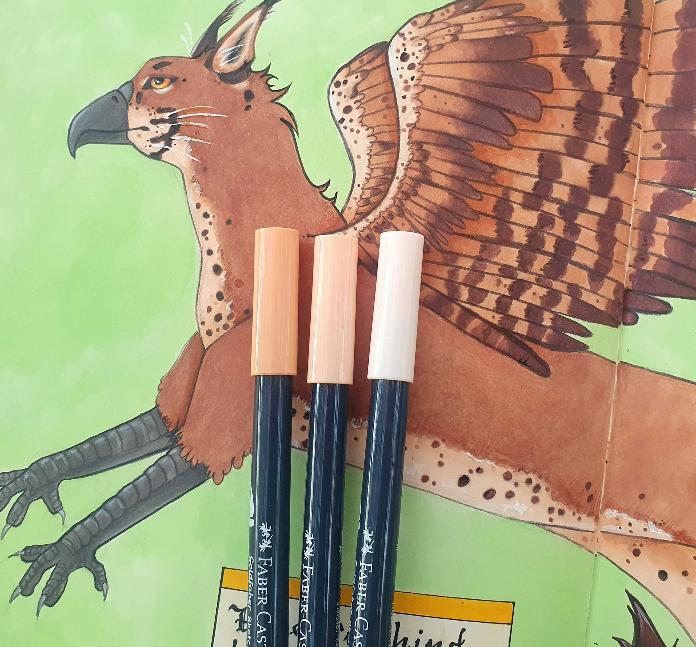Introduction-
I am Em Studios, a self-taught artist who has been using alcohol-based markers since 2017. My favourite art supplies are Copic Markers, Prismacolor pencils, and Finetec Watercolours. I specialise in character design, creature design, and fantasy-inspired art. As a storyteller and a writer, I find it important to capture the details and personality of each character and creature I work on. Alcohol-based markers are my primary medium because the smooth colours and blendability are perfect for my art style.
First Impressions-
My first set of Faber-Castell Sketch Markers is the Portrait Set. I picked this specific set because it contains colours similar to most of the projects I work on. For my current project, an illustration of a Griffin, I needed some rich brown, tan and grey colours. I was happy when I saw that the colours in this set happened to be exactly what I needed!
I was impressed by the packaging since the markers came in a printed box along with a swatch card for testing the inks. There was also a leaflet with the range of colours and the history of Faber-Castell. On the leaflet, I read that the Markers also come with a colourless blender, which was not included in the set that I have. The leaflet also noted that the markers can be purchased individually, but I am not sure if the individual colours are available in South Africa yet.
While swatching the markers on the provided card, I noticed a strong odour. All alcohol markers tend to have a sharp alcohol smell, but unfortunately, the odour was worse than Copic or Ohuhu markers. The smell can be off-putting for a beginner artist, but after a while, you will acclimatize to the smell and it will not affect the experience of using the markers.
Although the barrel of the marker feels cheaper than the Copic Sketch markers, the shape of the marker feels like holding a regular fine-tip marker or felt-tip pen. I was surprised to see that these markers have brush and fine-point nibs, as usually cheaper markers have bullet and chisel nibs. I’ve never seen an alcohol-based marker with a fine-liner-like nib, but I did see a lot of potential in the design choice. The brush nib is long and stiff, mimicking what you usually see in a water-based marker. The markers are numbered, helping you keep track of what colours you use in specific projects. One thing that I think Faber-Castell could do to improve their markers is to add a more logical order to their number system. This can be done by having lower numbers indicate lighter colours and higher numbers indicate darker colours. Adding a lettering system, such as G for green tones, or E for earth tones, could also help beginners learn to blend and recognize their favourite markers.
As for how these markers felt during the initial swatch, I was impressed. The colour choices included in this set are good, and I was surprised to see a true pastel marker in the set. “True Pastel” is a term I use to describe markers with very transparent ink. This transparency is essential for colouring skin tones, shimmering effects and glazing. Copic is the only marker brand that offers very pale, nearly completely transparent colours. This specific marker, with the code 132, is the closest I’ve seen to a true pastel in any other brand of marker. The markers coloured wonderfully, and the ink applied smoothly. The ink quality itself looked almost identical to the quality of my Copic Sketch markers!
I would say that my first impressions of these markers are overall positive, and I was looking forward to testing them out in an illustration.
Illustration using the Faber-Castell Sketch Markers
The materials I used when creating this illustration were Faber-Castell Sketch Markers, Copic Markers, Prismacolor Pencils and Finetec Metallic watercolours. I used the Faber-Castell Sketch Markers with the colour codes 303, 186 and 378. This was for the Griffin’s fur, underbelly and darker markings. I shaded the illustration using coloured pencils and Copic Markers.
The colours were even in smaller areas, and I did not encounter any problems while I illustrated the face and the smaller sections on the wings and chest. The markers were able to blend well, as seen on the ears and feathers. I enjoyed using the fine-liner tip on these markers, as they allowed me to texture the fur and add small details that a brush nib would not allow me to do.
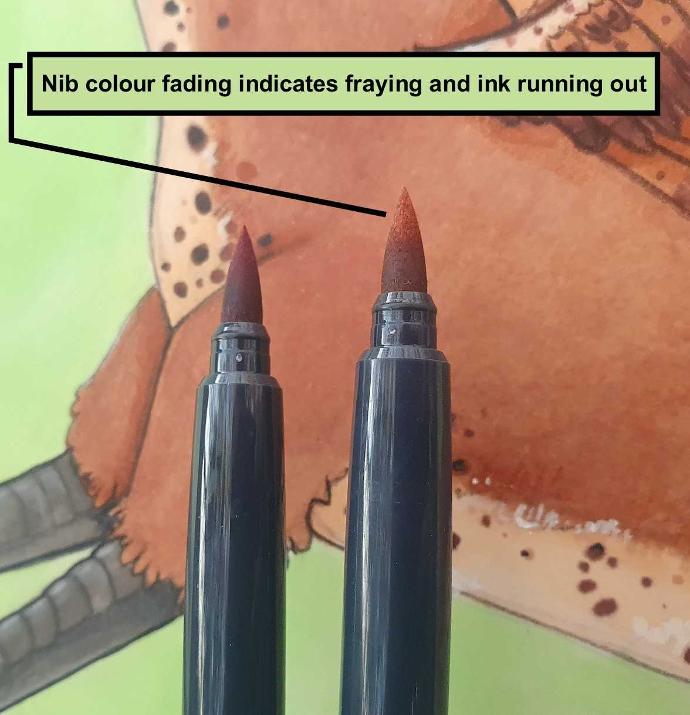
I would say the biggest issue I ran into while illustrating was when I was working on the hind leg of the Griffin. The marker almost completely ran dry. The nib had begun to fray, and I was worried that I had damaged the marker after only one illustration.
This image shows what the
damaged brush nib looks like compared with a marker I did not use in the
illustration.
The brush nibs are stiff, which helps when adding small elements and details, but makes colouring large areas difficult. When I started working on the larger areas, such as the neck, chest and back of the Griffin, the marker started patching, the ink didn’t spread evenly throughout the paper and began to leave areas blotched and patchy. I was able to fix this by layering the marker a few times or blending it out with a Copic in a similar colour.
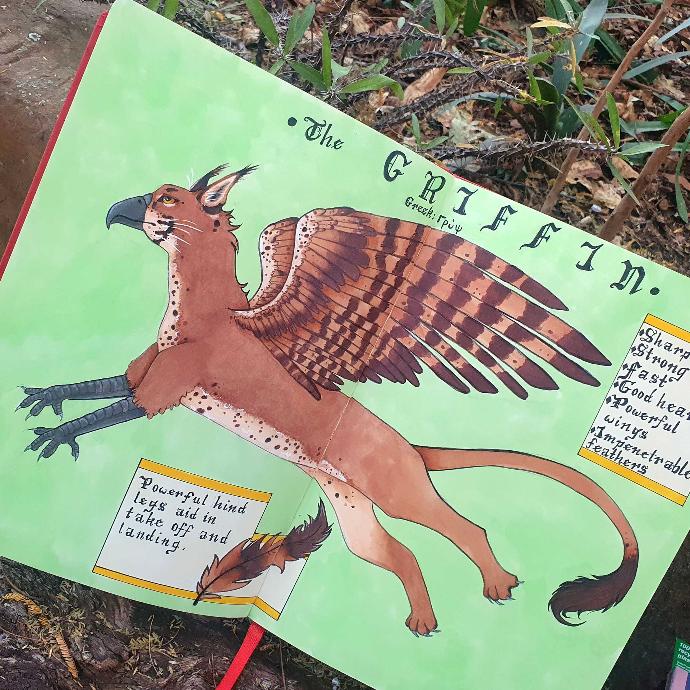
Conclusion and Closing Thoughts
To conclude, I would say that these markers are a great start for a beginner alcohol marker artist. They colour smoothly in small areas, have good-quality ink, blend well, are easy to handle and have both a brush and a fine end. The bonus is that they are affordable, come in well-chosen colour sets, and can be purchased individually. For a beginner, these advantages will give them a positive first experience and encourage them to experiment and learn all the basic marker colouring techniques. I would recommend these to all kinds of artists, as they are versatile tools and can be used alongside many well-loved mediums, such as colouring pencils.
However, there are a few areas in which the quality of these markers can be improved. Firstly, to successfully blend and colour large areas, the brush nib would need to be of higher quality. Fraying can cause the marker to scratch on the paper, leaving lines of unblended ink. A softer, better-quality nib would also aid in blending large gradients of colour. Secondly, having refills would aid artists who primarily use alcohol-based markers and need to have specific colours on hand. Having to buy a new marker every time one runs out will be costly, especially when the colour runs out after only one illustration. Offering refills will encourage artists to use these markers long-term, as they will have a refill on hand as soon as the marker begins to dry out.
To leave the review on a positive note, here are some of my favourite things about these markers:
· The fine point on the marker is unique, allows for more detail and adds a fun element to the product.
· The design of the markers is beginner-friendly, easy to use and easy to store.
· The colour choices in the sets are great, including a variety of tones.
· They make an ideal companion supply to use along with other mediums and alcohol markers, especially colouring pencils.
I hope to see Faber-Castell continue to make the sketch markers and improve on the design.
